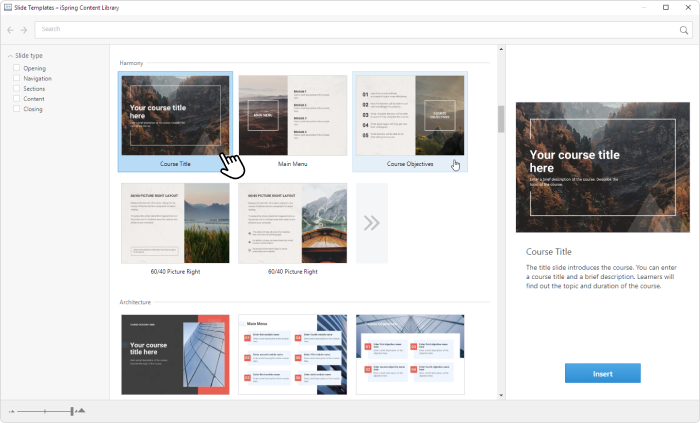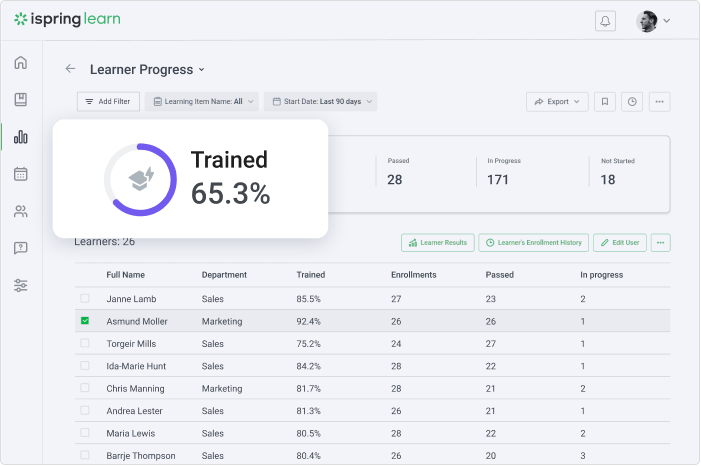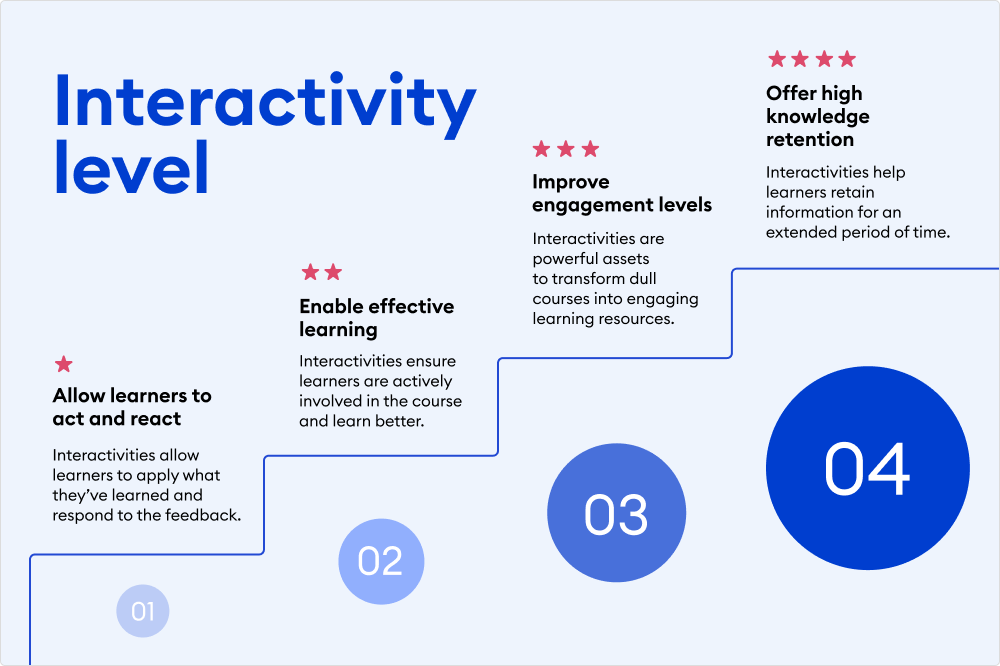8 eLearning Challenges: Surmounting the Obstacles

One of the most challenging, yet exhilarating, aspects of eLearning is that no matter how long you’ve been in the game, the industry keeps you on your toes! It offers both training professionals and trainees unparalleled convenience, flexibility, and savings. Individuals, educational institutions, and companies are enthusiastically embracing it as a powerful and effective teaching delivery method.
The eLearning world is constantly evolving with new technologies, studies, and methods to keep pace with this abrupt shift in demand. Avoiding curve balls while staying ahead of the curve is a tricky balancing act.
Does your company train employees online? Perhaps you’re looking to roll out a brand new program for the first time. In any case, keep reading! This article outlines 8 typical eLearning challenges and solutions to help you weave through the obstacles.
Challenge 1: Instruction Without an Instructor
The most glaring instructional challenge of eLearning, and what caused most of the pushback during its emergence, was the concept of instruction without an instructor. The move toward instructor-free, online learning that can take place anywhere at any time, was met with great skepticism. Without an instructor physically present, how could one teach, assess, and grade learners, all while ensuring that they remain engaged and on track?
In some cases, not only is support from a live instructor necessary for particular learning styles to excel, but employees might feel emotionally disconnected from their training beyond a social “classroom” environment. This lack of emotional engagement is devastating to their learning potential.
How to overcome it
It really comes down to the technology. You can engage with instructors remotely using various text and voice mediums. For example, trainees that need further guidance or clarification can email instructors, make phone calls, and engage with fellow peers on social forums.
Of course, some training programs are standalone and asynchronous in nature. These courses are self-paced and necessitate a fully “hands-off” approach to instruction. In these contexts, it’s crucial to incorporate rich multimedia, such as talking head videos and audio narration that – especially in combination with each other – mimic a virtual “human” presence.
But the best way to bridge this emotional gap for disconnected learners is through web conferencing tools, which enable you to remotely host and broadcast meetings in real-time to hundreds of trainees simultaneously. The eLearning world is currently flooded with platforms through which trainees can learn with a virtual instructor in a simulated classroom environment. The options are myriad, with Zoom leading the charge since early 2020, especially due to its vast remote team collaboration features.
Whether you’re giving a lecture or sharing your screen for a software simulation, web conferencing tools are indispensable when trying to simulate a classroom environment for a blended learning program.
Challenge 2: Wearing Too Many Different Hats
Depending on the size of your business and the nature of your training program, you might not have a dedicated eLearning development team. Companies often divide and develop training according to departments or teams. As such, training managers are frequently required to wear many hats. For example, a training manager could play the roles of subject matter expert, instructor, course builder, and LMS admin.
While it might seem far-fetched for one person to take all of this on, businesses often simply don’t have the resources to outsource an SME, instructor, and/or L&D team. Besides, no one is an expert at everything. Training suffers when professionals are forced to play to both their strengths and weaknesses.
How to overcome it
The most obvious solution here would be to outsource help so that tasks are divided according to each professional’s strengths and background experiences. But, assuming you don’t have the budget to open up an entirely new department, there are fantastic tools on the market that can do most of the heavy lifting for you (this is why it’s important to stay up to date)! For example, the right authoring tool can virtually replace an entire L&D department, even if your team possesses great technological proficiency.
It’s easy to get lost in the logistics of building slides, designing templates, creating proprietary videos and images, as well as grading and distributing assessments – an absolute must have. Fortunately, the market is flooded with authoring tools that can create powerful courses that are indistinguishable from those created by the pros! The key is choosing software that offers sophisticated features with a minimal learning curve.
If you’ve ever used PowerPoint, or need to convert old PPT presentations into eLearning in a jiffy, then iSpring Suite is the most obvious contender. It’s built right into the ribbon of the PowerPoint interface for even the most technologically unsavvy training team.
Simply build slides out using the PowerPoint interface, but with more sophisticated interactive features. Rather than basic animations, iSpring enables you to create quizzes and assessments, talking head videos and screencasts, dialogue simulations, and brief interactive modules.
And if you’re worried about your lack of design skills, iSpring grants access to a template and asset library with hundreds of copyright-free content you can use at no extra cost. This feature really takes the edge off when creating content in-house.

The vast selection of authoring tools can be overwhelming and not all are made equal. While some boast and prioritize robustness and sophistication of features, they can also be extremely clunky and tedious to use. Figure out what’s important and assess your training needs before deciding on the training delivery method. This will ensure you land on the right authoring tool for your organization.
Challenge 3: Keeping Employees Motivated/Engaged
Especially in the absence of synchronous instruction, it can be a real nightmare to ensure that learners are not only motivated to actually do the training, but that they’re also fully engaged. This might seem like an impossible feat without cracking the proverbial whip behind them.
And what is more, because online learning enables learners to train from anywhere, they’re bound to procrastinate, get distracted, and favor relaxation at home. Getting your off-site employees in front of their training and keeping them there lies at the core of many instructional design principles and theories.
How to overcome it
You can start by familiarizing yourself with helpful instructional design theories that discuss adult learner engagement and motivation before beginning the course development process.
For example, the self-determination theory concerns itself with intrinsic motivation. By incorporating its respective principles of competence, autonomy, and relatedness into your program, you tap into the psychology that gives rise to self-motivating behavior. This, of course, requires extensive research on the learners’ backgrounds.
The quality of your content is one of the biggest factors in employee engagement. For example, if you’re using a linear, slide-based training method, then be sure to incorporate a vast range of multimedia and interactions; it’s the easiest and fastest way to accommodate and engage a broad learner base.
Here’s a demo of a slide-based course created with iSpring Suite. As you can see, you can effortlessly incorporate not only text, images, animations, and navigation buttons, but quizzes with real-time feedback and interactive modules, too.
The breadth of multimedia is also seen in video-based training, which incorporates audio, images, and text all at once. It’s no wonder people are watching an average of 84 minutes of video per day! And this number is projected to increase to 100 minutes by 2022.
Learn more about how to keep learners engaged →
Challenge 4: Designing Training for a Wide Audience Demographic
The broader the learner base, the more learning styles you’ll need to accommodate the learners. However, this instructional design hurdle actually precedes that step. It involves a thorough training needs analysis, wherein the course designer factors in all trainees’ knowledge gaps, educational and career backgrounds, ages, lifestyles, and even their technological proficiency levels to weigh in on the final design.
The ultimate challenge is thus walking the tightrope between these different demographics while attempting to arrive at a singular yet all-encompassing solution.
How to overcome it
Fortunately, the best way to gracefully walk this tightrope is much easier than you’d think. Research is at the core of overcoming this hurdle – that is, empirical research. As such, surveying your trainees with well-thought-out questions can help you assess their knowledge gaps and develop clear and relevant learning objectives.
Consider coming up with a few poll responses to these basic training needs analysis questions, like these:
- What is your current role within the company?
- What is your career/educational background?
- What skills do you already have? What skills do you think you need to develop?
- What are your job motivators?
- What is your preferred learning style/format (e.g., slides, images, videos, interactions)?
You can also refer to this sample training needs assessment survey created with iSpring Suite:
Challenge 5: Tracking Trainee Progress
Imagine having to manually email your trainees, grade and distribute their results, as well as “drip” or “feed” new content to them based on each of their respective training schedules. This would be exhausting. And we haven’t even gotten to handling registration, monitoring user behavior, and monitoring completion details on both individual and collective levels.
Furthermore, neither tracking trainee progress nor learner data collection simply start and stop at the research/training needs stage of course development. Rather, it is a self-perpetuated process of continuous improvement. But this continual and manual collection of data is often far too taxing on one’s mental and physical faculties.
How to overcome it
Any training program worth its salt should have the means to automatically assess and grade learners. That’s why the eLearning market is inundated with various learning management systems that do most of the lifting. LMSs are like the backbone of your overall training process and environment. Not only do they deliver the front end for employees to access training, but a back end that allows managers and L&D reps to administrate, track, and document their training activities.
This ultimately provides a closeup, 360° view of how trainees interact with your program, thereby allowing you to adjust accordingly and “improve the machine” as more data is collected.
Here’s a view of the analytics dashboard in iSpring Learn LMS.

LMSs are powerful tools to have in your arsenal whenever you’re trying to enhance the overall efficacy of your training program (especially with post-training feedback).
Challenge 6: Choosing the Right Interactivity Level/Interactions
There is no one-size-fits-all approach to eLearning. That’s why designing eLearning for a large user base often feels like being pulled in many directions at once. But choosing the right interactivity level is no small feat. The interactivity level you choose can easily make or break your course.
According to the tenets of Adult Learning Theory, adult learners need to feel in control and take an active role in their learning. As such, without the just right degree of interactivity, you run the risk of producing a passive learning environment and, consequently, dwindling motivation and engagement.
What about a situation where your audience is from an older generation or from a part of the world where sophisticated interactivity/technology would necessitate a potentially frustrating learning curve?
And now, how about the all-too-common scenario in which trainees encompass a mixture of all the aforementioned demographics? This is where things get truly tricky – finding the balance between not having a totally passive and unengaging course while catering to the full spectrum of technological savviness.
How to overcome it
When developing eLearning, in general, there are 4 levels of interactivity.
- Level 1 (Passive) might entail something as simple as a slide or a video navigation button.
- Level 2 (Limited) introduces some richer media, such as basic animations, click-to-reveals, transitions, and audio recordings.
- Level 3 (Moderate) is much more sophisticated, with richer multimedia that includes interactive audio and videos.
- Level 4 (Full Immersion) gives the trainee full control over his/her experience. This level might involve virtual tours, virtual role-play, and/or simulations!
The infographic below neatly summarizes what your overall learning goals should be when selecting your interactivity level. As you can see, the higher the level, the more “control” and “autonomy” that is placed in the learner’s hands.

As a course designer, it’s your job to figure out which of the 4 levels of interactivity you should entertain. But be realistic! In addition to your survey and training needs analysis, consider your budget and time constraints. As you can imagine, they both steadily increase as you work up the interactivity ladder.
Challenge 7: Unrealistic Expectations
For the instructional designer, it’s all about “reading the room” and understanding what tools are at your disposal to do it correctly. Two huge challenges of eLearning are time and budget constraints. Not all businesses have an infinite pool of resources. As such, you might need to get a little creative or dig deeper into your profit pockets.
But one of the biggest underestimations is the time it takes to see course development through to completion. You’d be hard-pressed to find an eLearning pro that hasn’t experienced unhealthy amounts of sleep loss and stress due to poor planning or “youthful optimism.”
How to overcome it
The key to dealing with unrealistic expectations is simply budgeting your time and money. As a matter of fact, this process goes hand in hand. You’ll need to map out the entire course development process from the beginning (e.g., conducting research, surveying trainees) to the end (i.e., publishing to an LMS), then break it down into specific milestones that have their associated costs and deadlines. This budget and process breakdown also helps to ensure full transparency, as well as honesty with yourself and your team.
Challenge 8: Keeping Pace with Modern Tech and Trends
When it comes to keeping pace with modern eLearning tech and trends, there simply isn’t enough time in the world. Staying afloat with this type of continuous development requires dedication of both personal and professional time. Realistically speaking, training professionals are often tempted to drop the ball in this regard. They stick to whatever is familiar or has worked in the past. But eLearning is a thriving and ever-growing organism. At best, sticking to what you know could lead to you missing out on cool and competitive features. At worst, your training could suffer as studies about more effective eLearning methods continue to eclipse the familiar.
One particularly nightmarish scenario occurs when eLearning tech simply becomes obsolete. If this catches you off guard and you’re used to creating courses one way (e.g., Flash-based courses), you may have to revisit entire volumes of prior work and make tedious tweaks to bring everything up to speed again.
How to overcome it
Think ahead. There’s much to be gained if you muster the courage to venture into the unfamiliar. Knowledge about eLearning and instructional design methods is at its infancy, given the large bodies of research and studies we’re invariably seeing come out.
That said, “staying on guard” can be as simple as joining online eLearning forums and communities where professionals and hobbyists alike provide support to one another regarding common software updates, bugs, and how-tos. The sheer volume of blogs, webinars, reviews, and case studies attached to these tech and trends provide ample, unbiased guidance to help you make sound and personalized decisions amongst a vast array of options. So to help you get started, here’s a list of the industry’s top eLearning websites.
You might also consider attending eLearning events and conferences. That way, you kill two birds with one stone – staying up to date with eLearning trends and tech while networking and cultivating a strong community of your own.
Final Thoughts
eLearning is ever-evolving and quite a tough nut to crack. One minute, it feels like you’ve gained mastery and streamlined your methods, and the next minute, you’re struggling to keep your head above water. So, you always need to stay on the ball!
These eLearning challenges and solutions largely boil down to clarifying what your needs are and aligning them with the right technologies to lighten the load. L&D departments are great for larger organizations, but can really be taxing on SMEs.
If you’re looking for a tool that takes charge of the training development process, then try iSpring Suite, credit-card and commitment-free!





